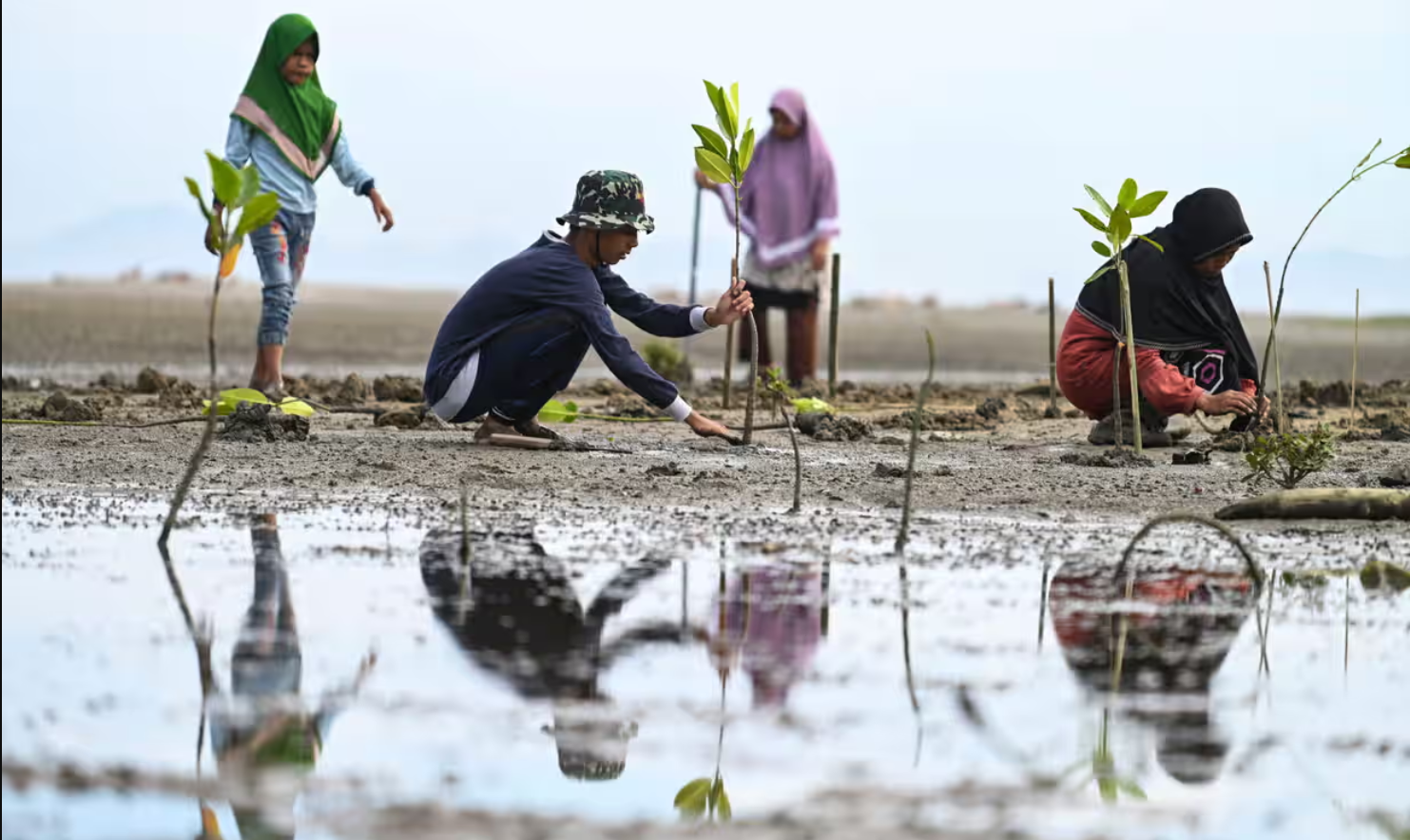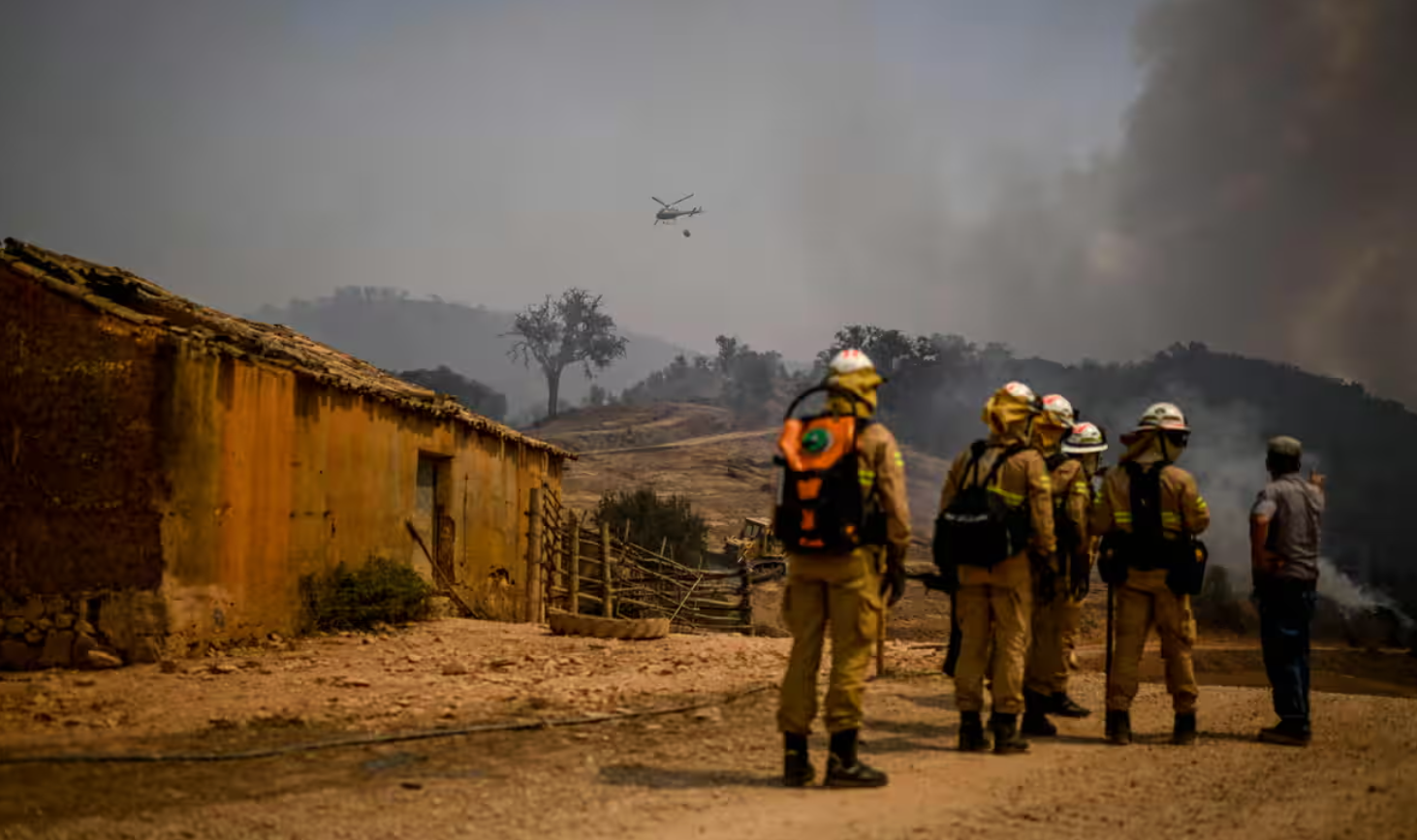Patrick Greenfield
Nature could hold the key to protecting humanity as the planet heats, but scientists say it is still an underused option
The natural world underpins human civilisation on every corner of the planet. From oceans to rainforests, grasslands to mangrove swamps, ecosystems feed billions of humans, produce clean water and provide materials for shelter. As the planet heats, scientists and conservationists are urging the world to harness and restore nature to maintain a habitable planet.
What is a nature-based solution?
Nature-based solutions is an umbrella term for using the power of nature to mitigate the impact of climate change while benefiting biodiversity and human wellbeing. There are thousands of examples: planting trees to shield buildings from heat; restoring wetlands to create “sponge cities” that protect people from flooding; planting mangroves to hold back storm surges in coastal regions.
Scientists say they are a cheap and underused option for protecting humanity from the environmental crises of the 21st century, improving food and water security, human health, and shielding communities from extreme weather.
Why do we need them?
The Paris agreement is not just about limiting global heating. It also includes commitments on mitigation and adaptation to a hotter world where flooding, droughts and large storms will be more common and intense due to higher concentrations of greenhouse gases in the atmosphere from fossil fuels.
Nature can help keep us safe from the worst effects in many cases. For example, in many parts of the world, rainfall is expected to become irregular, raining too much then raining too little. Using nature to hold more water in the landscape, whether that be through expanding wetlands or even reintroducing beavers near urban areas so their dams can slow the flow of water, can improve resilience to both drought and flooding.
Why does biodiversity matter so much?
Many scientists warn that human behaviour is driving the sixth mass extinction of life on Earth, with 1 million species at risk of disappearing. This, in turn, is degrading the planet’s ability to support human life and wellbeing.
By definition, resilient and complete ecosystems are full of plants, animals and other organisms that their degraded and simplified equivalents lack. For example, a plantation of a single tree species supports much less life, stores much less carbon and provides a fraction of the environmental benefits compared to an old growth forest that has stood for thousands of years.
If climate solutions do not harness the full richness of nature, they will often be less effective and provide far fewer benefits. As such, sometimes the simplest and most effective solution is making sure a complete ecosystem remains standing.
Forest fires in Portugal. Photograph: Patrícia de Melo Moreira/AFP/Getty Images
There are dozens of examples that demonstrate the importance of biodiversity and how it can be harnessed. In the Portuguese interior, which is a landscape dominated by non-native eucalyptus plantations that has experienced deadly wildfires, communities are planting slow-burning native tree and plant species near towns and villages to help minimise damage and keep people safe from future infernos.
How much can they help?
Nature can play a significant role in mitigating and adapting to the climate crisis. The oceans and land absorb more than half of all human greenhouse gas emissions every year and many researchers think they could do even more as the world decarbonises. But their ability to do so is itself threatened by climate breakdown, with enormous rainforests such as the Amazon at risk of collapse.
One recent study on the world’s forests found the equivalent of 50 years of US emissions could be sucked down by letting them grow old and restoring degraded ecosystems. But there are significant caveats: the scientists caution that mass monoculture tree-planting, and using them as carbon offsets, will not help forests realise their potential. And there are uncertainties about how the natural world will react to a hotter planet.
Are nature-based solutions an alternative to cutting emissions?
No. Climate breakdown is in itself a threat to nature and a major driver of biodiversity loss. Nature’s ability to help us adapt and mitigate global heating is likely to degrade as we emit more greenhouse gases.
What role will they play at Cop28?
Many countries are using nature as part of their contributions to the Paris agreement target to limit global heating to well below 2C above pre industrial levels. Companies big and small are funding nature-based solutions to meet their sustainability targets, which they are often keen to display at the yearly climate summit.
Cop28 will have specific dates dedicated to nature and food, where nature and nature-based solutions are likely to be prominent.


